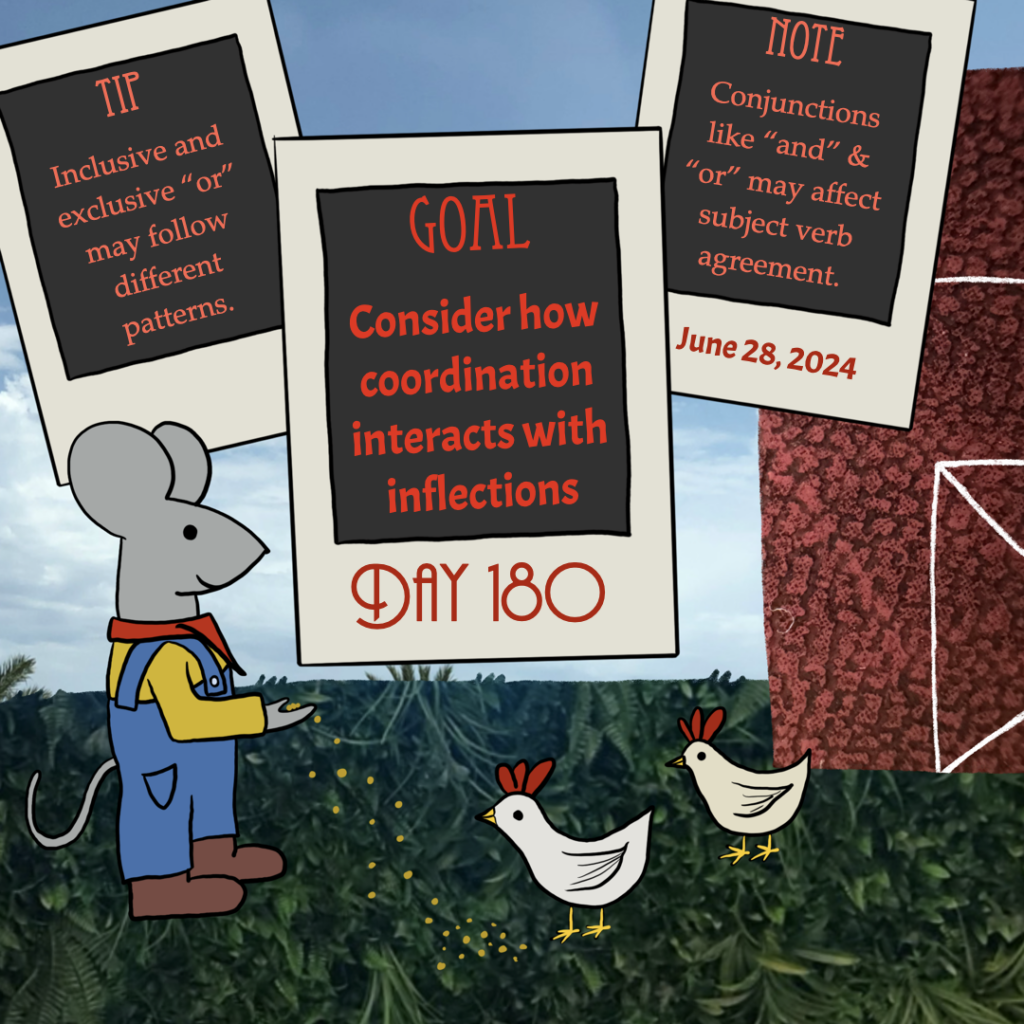
Goal: Consider how coordination interact with inflections
Note: Conjunctions like “and” & “or” may affect subject verb agreement.
Tip: Inclusive and exclusive “or” may follow different patterns.
Work focus: Organize/Plan/Structure
Now that you have some coordinated noun phrases worked out, spend today considering how those noun phrases might interact with any inflections in your language that are sensitive to number agreement, such as subject-verb agreement, bipersonal agreement, or modifier agreement.
Noun phrases joined by “and” might be treated as plural even if both nouns themselves are singular. They don’t have to be, though—sometimes coordinated noun phrases are treated as singular when both nouns are singular because they are seen as combining to create one entity or unit. Sometimes one noun is viewed as the head, and its number is used for agreement, regardless of the number of the other noun.
Noun phrases joined by “or” may have a different agreement patter than the “and” pattern. For instance, in English, we tend to use plural agreement for “and” (e.g. “The table and the chair are in the dining room”), but “or” can follow a different pattern in some dialects, where the verb agreement is determined by the last noun (e.g. “(Either) The table or the four chairs are in the dining room” vs. “(Either) The four chairs or the table is in the dining room”).
That isn’t the case for all English speakers, though. In some dialects, the preference is to use plural agreement if at least one noun is plural and singular if both nouns are singular (e.g. “(Either) The table or the chair is in the dining room” vs. “(Either) The tables or the chair are in the dining room”).
If your language distinguishes inclusive “or” from exclusive “or,” they may follow different agreement patterns, where inclusive “or” might trigger plural agreement while exclusive “or” might require singular.
